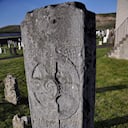Which of Jesus' parables was about showing mercy to the injured man, without regard to his origins?
The parable of the Good Samaritan is a parable told by Jesus in the Gospel of Luke. It is about a traveller who is stripped of clothing, beaten, and left half dead alongside the road. First a priest and then a Levite comes by, but both avoid the man. Finally, a Samaritan happens upon the traveller. Samaritans and Jews despised each other, but the Samaritan helps the injured man. Jesus is described as telling the parable in response to the question from a lawyer, "And who is my neighbour?". In response, Jesus tells the parable, the conclusion of which is that the neighbour figure in the parable is the man who shows mercy to the injured man—that is, the Samaritan.
Some Christians, such as Augustine, have interpreted the parable allegorically, with the Samaritan representing Jesus Christ, who saves the sinful soul. Others, however, discount this allegory as unrelated to the parable's original meaning and see the parable as exemplifying the ethics of Jesus.
The parable has inspired painting, sculpture, satire, poetry, photography, and film. The phrase "good Samaritan", meaning someone who helps a stranger, derives from this parable, and many hospitals and charitable organizations are named after the Good Samaritan.
More Info:
en.wikipedia.org










